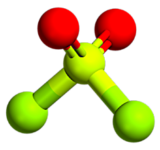Home / Views On The Coverage Of Greenhouse Gases – Australia


Scientists estimate that world wide,
termites may release over 150 million tons
of methane gas into the atmosphere annually.
AND
Termites produce more CO2 each year
than all living things combined
 .
.
Scientists have calculated that termites
alone produce ten times as much
carbon dioxide as all the fossil fuels
burned in the whole world in a year.
.
Pound for pound, the weight of all the termites in the
world is greater than the total weight of all humans.
.
Scientists estimate that, worldwide, termites may release
over 150 million tons of methane gas into the atmosphere
annually. In our lower atmosphere this methane then
reacts to form carbon dioxide and ozone.
AUSTRALIA
Views On The Coverage Of Greenhouse Gases
Submission to the AWG-LCA and AWG-KP
.
Additional hydrofluorocarbons (HFCs) and perfluorocarbons (PFCs) with GWP values, as referred to in the Intergovernmental Panel on Climate Change’s (IPCC’s)
Third and Fourth Assessment Reports (TAR and AR4);
Nitrogen trifluoride (NF3);
Fluorinated ethers with GWP values, as referred to in the IPCC’s AR4;
Perfluoropolyethers with GWP values, as referred to in the IPCC’s AR4; and Sulfuryl fluoride (SO2F2).
Where additional gases have been proposed by Parties for inclusion in a post-2012 outcome, Australia’s view is that these gases should be considered where they have been provided a GWP value by the IPCC.
Additional gases not provided a GWP value by the IPCC should not be considered for inclusion at this stage, however we would welcome further scientific research and analysis to achieve greater understanding and inform consideration for the third and subsequent commitment periods. Additional gases controlled under the Montreal Protocol should not be considered for inclusion in a post-2012 outcome. [?]
Australia’s initial views are informed by the following overarching principles:
Coverage of anthropogenic emissions and removals should aim to be rigorous, robust and comprehensive, while finding an appropriate balance between scientific precision, practicality and policy relevance;
.
Approaches should facilitate activities that deliver real climate benefits within a timeframe appropriate to achieve the Convention’s goal of preventing dangerous anthropogenic interference with the climate system;
– Methodologies should aim not to restrict the flexibility of policy responses, recognising the need for a comprehensive suite of mitigation measures to achieve the required levels of abatement; and a coordinated approach should be taken across the two AWG processes, given their close interlinkages, to ensure the post-2012 outcome adopts a universal approach towards gases.
Australia considers that there is a strong case for including additional HFCs and PFCs, and also NF3 (as listed in the IPCC’s TAR and AR4). There is generally significant mitigation potential in relation to these gases. Further, a number of these gases have current or projected uses as replacements for ozone depleting substances controlled under the Montreal Protocol and/or gases already covered under Annex A of the Kyoto Protocol. Australia considers that inclusion of the additional HFCs and PFCs is further supported by the principle of maximum coverage, and on the basis that coverage of these families of gases has already been agreed by Parties for the first commitment period.
Current scientific and practical understanding of fluorinated ether and perfluoropolyether use, contribution to climate change, and mitigation potential is relatively limited. Australia considers that achieving greater understanding of these gases is important and would welcome work by the IPCC to increase understanding of the mitigation potentials for these gases. Australia could support a decision to consider the inclusion of these gases in the third and subsequent commitment periods.
In contrast to the other proposed gases, sulfuryl fluoride has not been reviewed by the IPCC.
No consensus exists on the data required to determine its contribution to climate change. In the absence of such information, there is not a good case to include sulfuryl fluoride in the second commitment period. Australia would welcome work by the IPCC to determine the nature and extent of sulfuryl fluoride’s contribution to global warming.
Further information on current and projected use, relative contributions to climate change, and mitigation potential for these gases is outlined below, and has informed the above positions.
HFCs and PFCs
HFCs and PFCs are primarily used to replace ozone depleting substances controlled under the Montreal Protocol. HFCs are used for refrigeration, air conditioning, foam blowing, aerosols and fire extinguishing. PFCs result from aluminium smelting and sometimes refrigeration, fire extinguishing and electronics manufacture. The IPCC states that human-made PFCs and HFCs, “are very effective absorbers of infrared radiation so that even small amounts of these gases contribute significantly to the [radiative forcing] of the climate system”.1
Use of HFC-245fa and HFC-365mfc is largely confined to countries that have phased out HCFC-141b in foam blowing applications. HFC use will likely increase as a result of the Montreal Protocol HCFC adjustment in 2007. There is significant potential for mitigation of these gases in the long term through the use of alternatives such as hydrocarbon, CO2, and methyl formate.
HFCs 152, 161, 236cb, and 236ea do not appear to be components of common refrigerant blends, nor do they appear to be used as common fire suppression gases or foam blowing agents, though they could find future use in these applications.
PFC 9-1-18 has a limited number of medical applications stemming from its use in first-generation PFC-based blood substitutes. Recently, PFC 9-1-18 has been proposed as a carrier of glassified microspheres that contain vaccines as it reduces the need for refrigeration; if adopted, emission rates could rise to the order of 103 tonnes year (similar in scale to SF6).2
It is important to recognise that HFCs and PFCs have already been included as families of gases covered in the first commitment period. More comprehensive coverage of these families could be achieved by inclusion of the additional HFCs and PFCs (with GWP values in the TAR and AR4) for the second commitment.
Nitrogen trifluoride (NF3)
NF3 is used in the electronics industry (semiconductor and LCD manufacture) for plasma etching and chamber cleaning processes, and is increasingly a replacement for PFCs and SF6. A recent paper estimates
1 AR4, WG1, p. 144.
2 Shine K.P et al. 2005. Perfluorodecalin: global warming potential and first detection in the atmosphere, Atmospheric Environment 39 (2005) 1759–1763. current global production at 4,000 metric tonnes per annum and provides reasonable evidence in support of a possible doubling of global production by 2010.3 The rapid growth of NF3 use in semiconductor manufacture is due both to growth in total semiconductor manufacture (with estimated production increases of 15 – 17% per annum4) as well as displacement of older PFC technology for new production lines that use NF3.
3 Prather, M. J., and J. Hsu. 2008. NF3, the Greenhouse Gas Missing From Kyoto. Geophys. Res. Lett., 35. L12810, doi:10.1029/2008GL034542, p. 1.
4 Robson, J.I., et al., 2006: Revised IR spectrum, radiative efficiency and global warming potential of nitrogen trifluoride. Geophys. Res. Lett., 33, L10817, doi:10.1029/2006GL026210.
5 Tsai W.T. 2005. . Environmental risk assessment of hydrofluoroethers (HFEs). Journal of Hazardous Materials A119 (2005) 69–78.
6 IPCC/TEAP. 2005, Special Report on Safeguarding the Ozone and the Global
Climate System. p. 391.
Some emission reduction goals have already been established in the semiconductor and LCD industries. Mitigation efforts in the semiconductor industry focus on process improvements/source reduction, alternative chemicals, capture and beneficial reuse, and destruction technologies. Many of these mitigation activities are available to NF3.
While use of NF3 as a replacement for PFCs and SF6 can deliver emission reductions, the relative contribution of NF3 to climate change is likely to increase as the use of NF3 grows, particularly if best practice emissions reduction is not employed.
Fluorinated ethers
Only hydrofluoroethers (HFEs) are provided GWP values in the AR4. Currently, the HFEs most widely used by industry are HFE-7200, HFE-7100 (both included in the AR4), HFE-7500 and HFE-7000 (both not included in the AR4), owing to their chemical similarity to HCFC-141b.5
The academic literature identifies a number of applications for which HFEs offer potential, in particular as refrigerants, solvents and as heat transfer fluids. The IPCC and the Montreal Protocol’s Technology and Economic Assessment Panel suggests that as a result of the relatively low GWPs of some HFEs, their use as a replacement for other gases would “significantly reduce” greenhouse gas emissions.6 However, as they are currently more expensive to produce than HFC alternatives, there is less commercial interest in their use except in high value sectors such as precision cleaning.
Information does not appear to be readily available on current and future uses for many of the HFEs listed in the AR4. This lack of information 7 KEMI, Kemikalieinspektionen, Sulfuryl Fluoride (PT8), Competent Authority Report, Document III-A7, Exotoxicological profile including environmental fate and behaviour, Swedish Chemicals Inspectorate, Sweden, 2005
8 Dr Paul Fraser, Chief Research Scientist Centre for Australian Weather and Climate Research CSIRO Marine and Atmospheric Research
9 Dillon, T., A. Horowitz & J. Crowley, The atmospheric chemistry of sulfuryl fluoride, SO2F2, Atmos. Chem. Phys., 8, 1547-1557, 2008
10 Ibid. 7
11 Ibid. 8 and Dillon, T., A. Horowitz & J. Crowley, The atmospheric chemistry of sulfuryl fluoride, SO2F2, Atmos. Chem. Phys., 8, 1547-1557, 2008 makes it difficult to assess the potential for HFEs to contribute to climate change, the scope for mitigation and its costs.
Perfluoropolyethers
Reported uses for perfluoropolyethers (PFPEs) include industrial heat transfer fluids, electronic reliability testing, metal and electronics cleaning, and lubricant applications. Only one PFPE is assigned a GWP value in the AR4. The use and relative contribution to climate change of this gas is not clear. More broadly, there appears to be a scarcity of readily available information on the global warming potentials and extent of PFPE use.
These uncertainties prevent an accurate assessment of the potential for PFPEs (including the PFPE listed in the AR4) to contribute to climate change, the scope for mitigation and its costs. However, achieving greater understanding of this family of gases is important.
Sulfuryl Fluoride
 Sulfuryl Fluoride (SO2F2) is used primarily as a fumigant, particularly as a replacement to ozone-depleting methyl bromide, which is partially subject to phase out measures under the Montreal Protocol. SO2F2 may also have applications in the semi-conductor industry and as a cover gas for magnesium melt protection.
Sulfuryl Fluoride (SO2F2) is used primarily as a fumigant, particularly as a replacement to ozone-depleting methyl bromide, which is partially subject to phase out measures under the Montreal Protocol. SO2F2 may also have applications in the semi-conductor industry and as a cover gas for magnesium melt protection.
SO2F2 is the only gas currently proposed for inclusion in the post-2012 outcome that has not been reviewed by the IPCC. Available information indicates no consensus on SO2F2’s GWP and atmospheric lifetime. GWP estimates over a 100 year time horizon range from between 278 and 4777 to between 500 and 20008 and as high as 80009. Atmospheric lifetimes range from less than 4.5 years,10 to approximately 30 years11. Available data suggests, however, that SO2F2’s current contribution is likely to be small. SO2F2 use is expected to rise in the future as pressure increases to reduce the use of other fumigants on efficacy, occupational health and safety and environmental grounds.
Recapture technology for SO2F2 is in its infancy and likely to be relatively costly.
The scope for mitigation of SO2F2 emissions is therefore largely limited to the adoption of alternatives; the technical and economic feasibility of which varies depending on country-specific regulatory, environmental and physical circumstances.
These uncertainties prevent an accurate assessment of SO2F2’s relative contribution to climate change, the scope for mitigation, and associated costs.
Further work to clarify these issues would appear warranted.
.
… ..OUR COMMENT:
The Australian media is very shy about refering to.fluoride in any form, – except to maintain the claim that fluorides prevent tooth decay! ! !
Australian bush fires produce Co2 !




 .
. Sulfuryl Fluoride (SO2F2) is used primarily as a fumigant, particularly as a replacement to ozone-depleting methyl bromide, which is partially subject to phase out measures under the Montreal Protocol. SO2F2 may also have applications in the semi-conductor industry and as a cover gas for magnesium melt protection.
Sulfuryl Fluoride (SO2F2) is used primarily as a fumigant, particularly as a replacement to ozone-depleting methyl bromide, which is partially subject to phase out measures under the Montreal Protocol. SO2F2 may also have applications in the semi-conductor industry and as a cover gas for magnesium melt protection.





